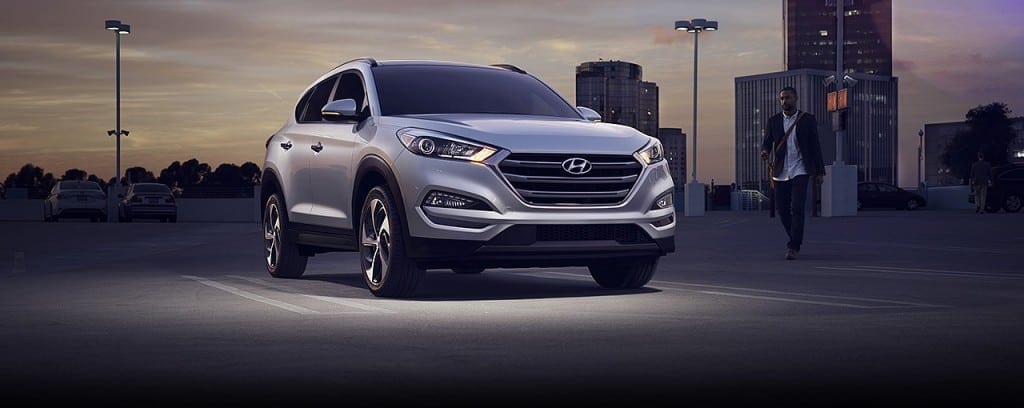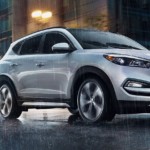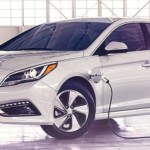Typically, compact vehicles have a spritely nature. They zip around on the road, and are small enough to feel like you are riding on the back of a bumblebee as opposed to a car. Therefore, when a car like the 2016 Hyundai Tucson for sale rolls around with some peppy performance, things get shaken up a bit. When I say peppy performance, I mean more kick than zip. This turbocharged engine provides a decent amount of power when your foot first hits the gas, which allows it to run faster-than-average compared to the other cars in its class. The only downside is the turbocharged engine isn’t available on the base trim, which means you need to pay a little more for that extra punch.
But if you do, you’ll have a car that won’t disappoint when it comes to performance, especially since it is considered a niche vehicle in the overpopulated car world.
What Makes the Tucson So Niche?
The Tucson represents an interesting spot in the car world, and its strong turbocharge engine provides it with even more uniqueness. In order to fully appreciate the power of this engine though, you have to understand why the design of the Tucson is unique.
While it’s labeled as a compact crossover, dimension-wise it’s actually shorter than most other notable compact crossover staples — like the Honda CRV and Toyota RAV4. These vehicles, along with Hyundai’s own Santa Fe Sport, offer more vehicle space simply because of their larger statures, but fail to offer that kick or pep that the Tucson does. While it’s smaller than these compact crossovers, it’s still larger than the subcompact crossovers such as the Honda HRV and Mazda CX-3. Therefore, it provides more interior volume and the result is a vehicle placed directly in the middle of the two classes: one that’s small enough to be quicker than most of the other compact crossovers, but still large enough so that it seems like a mansion compared to the subcompacts.
It’s the monkey in the middle, but unlike the childhood game, this monkey actually wins.
A Winning Design
Like I said before, this in-between design allows the Tucson to secure an interesting niche when it comes to the car market. A niche that gives it plenty of opportunity for success. For example, this compact crossover is small enough to weave through traffic like a subcompact vehicle, but still large enough to be a five-seater passenger vehicle.
This five-passenger seating — surprisingly — comes with plenty of legroom and headroom for adults in the front and the backseat of the cabin. The front seat comfort is plenty satisfactory as well, and also offers a power passenger seat, which is another one-up it has over other compact crossovers. The rear seat has been redesigned to sit higher than the previous generation, which now allows it to comfortably accommodate two six-foot tall passengers. Even a fifth passenger isn’t out of the question.
Cargo capacity has also improved compared to the previous generation, and it has 31 cubic feet behind the rear seats, and 61.9 cubic feet after the seats are folded down. These numbers are close enough to the well-known models in the class — like the CRV with 35.2 and 70.9 cubic feet, respectively, — to make the Tucson competitive. Throwing a cherry on top of the figurative sundae is a hands-free power liftgate, which is standard on the Sport and Limited. Unlike some other competitors, however, this liftgate doesn’t open by activating a foot sensor. The liftgate will open automatically via proximity sensor if you are standing a certain distance behind it with the key fob in your pocket.
The outside of the Tucson has a lot to do with its above-average performance as well. Since it’s poised a bit shorter than the competition, the Tucson naturally has less weight to manage when going down the road. Furthermore, the design of the Tucson is set up for peak aerodynamic efficiency, which means it won’t hinder the Tucson when the gas pedal is engaged.
As a bonus, it’s also one of the better looking compact crossovers in the class.
Performance
While some may call it dry, the base engine found on the Tucson is still worth mentioning. It might not be as peppy as the turbocharged, but it still gets the job done just fine. The base engine is a 2.0-liter four-cylinder that’s rated at 164 horsepower and 151 lb-ft of torque. It’s paired to a six-speed automatic transmission, and either front- or all-wheel drive. It’s able to get an EPA-estimated 23 mpg city and 31 mpg highway when paired to a FWD model. While that’s a bit below average for the compact car class, it could be a lot worse.
The real star of the show is that turbocharged engine I keep mentioning, which is a 1.6-liter four-cylinder. This bad boy generates 175 horsepower and 195 lb-ft of torque. That 195 lb-ft of torque is what gives the Tucson its above average acceleration, which clocks in at 7.9 seconds on a 0-60 mph dash. This power comes paired to a seven-speed dual clutch automated transmission. In a nutshell, it functions just like a fancy automatic. This engine can also be equipped to either a FWD or AWD model, and returns up to 26 mpg city and 33 mpg highway on the FWD version.
Since this engine is only available on the Eco, Sport, and Limited trim, you will have to pay a little extra for it. However, it’s definitely worth it. Especially for a compact crossover that can do 0-60 mph in 7.9 seconds — thanks to the increased amount of torque in the turbocharge engine. Pricing for the 2016 Hyundai Tucson starts as follows, according to trim level:
- SE: $22,700
- Eco: $24,150
- Sport: $26, 150
- Limited: $29,900
Check into your Hyundai dealership where the knowledgeable sales and finance teams can better help you determine which Tucson best fits your budget and lifestyle.






